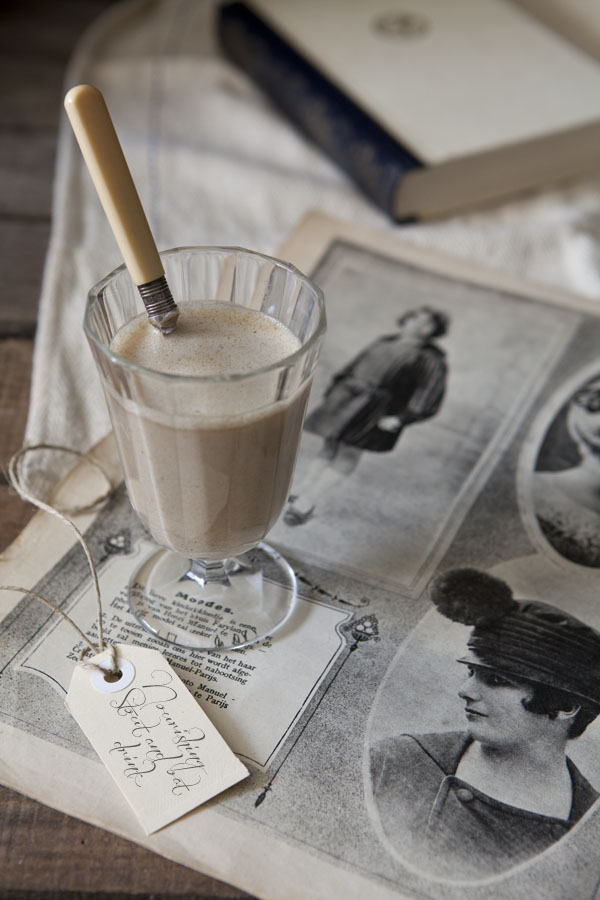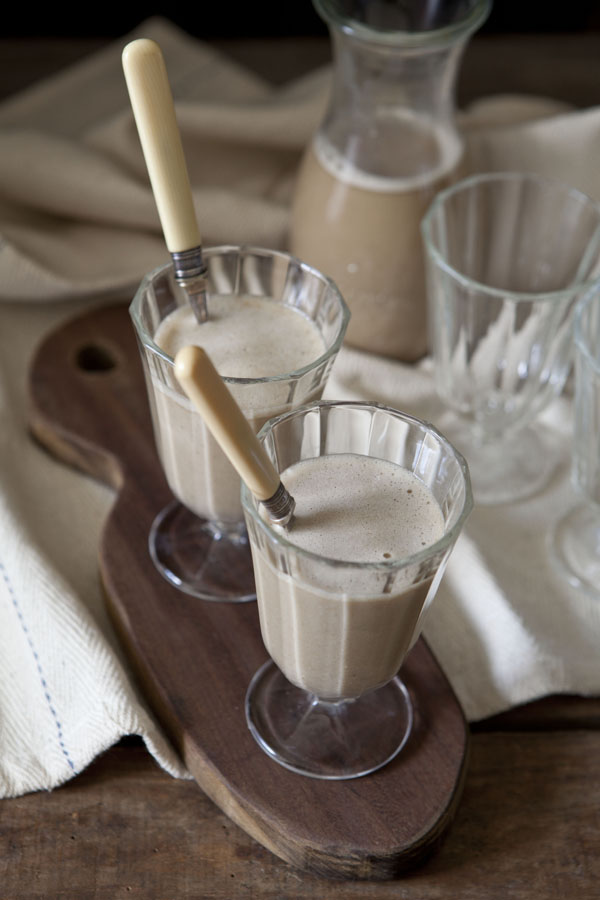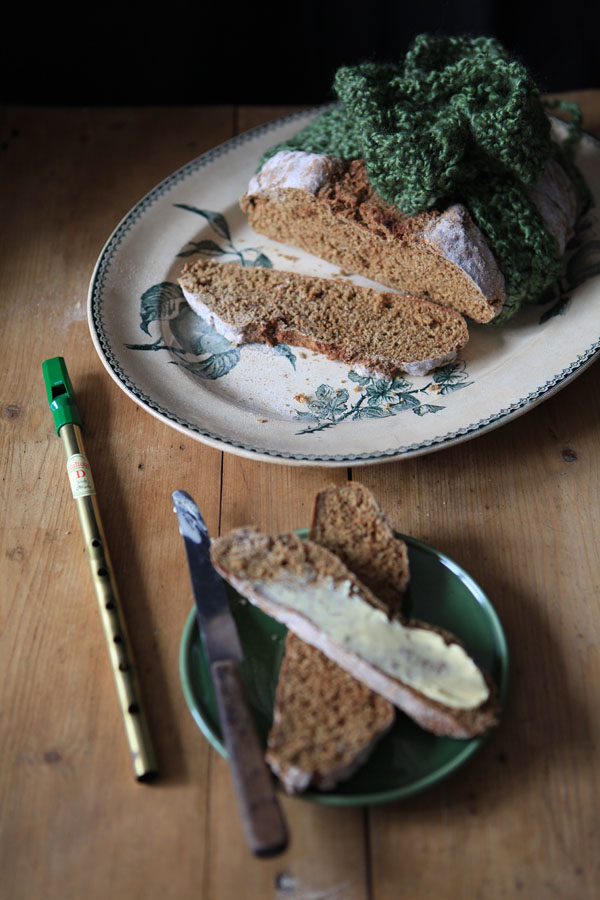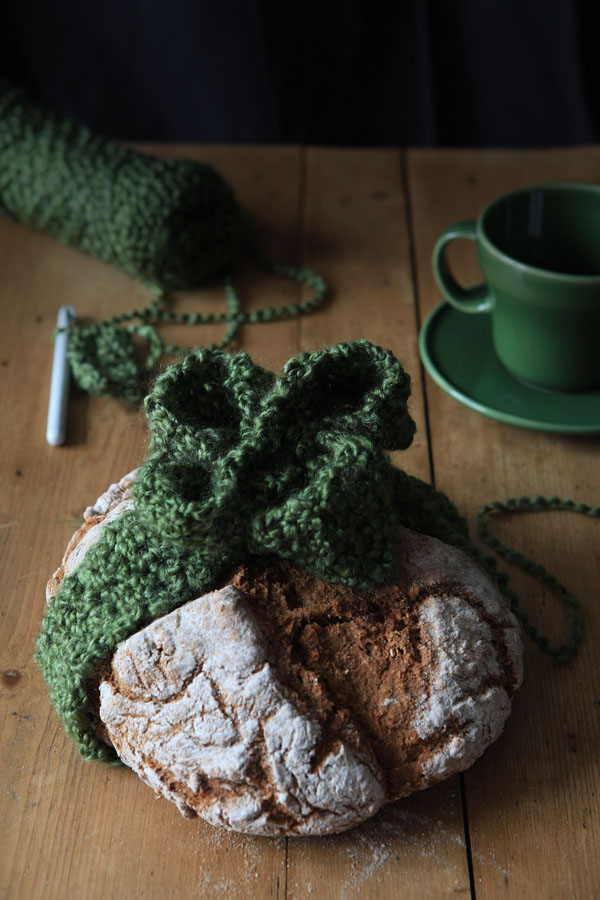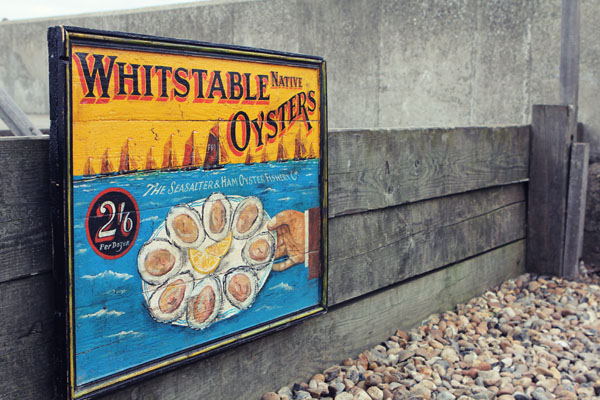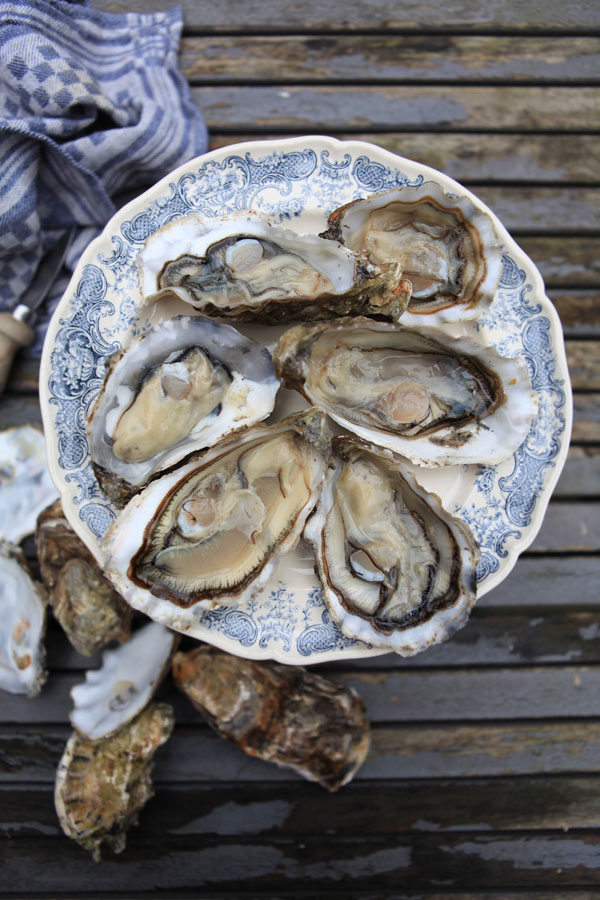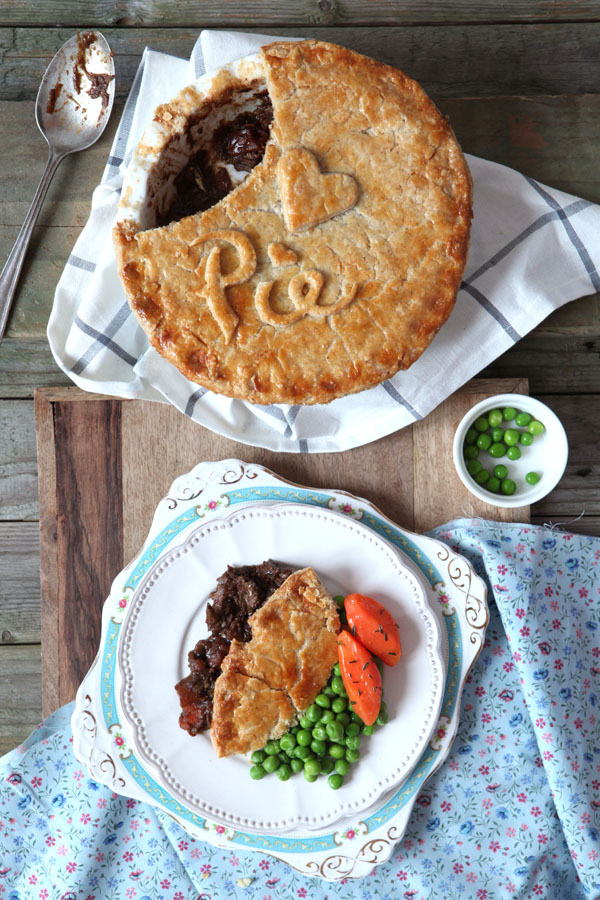The post Nourishing Stout and Oat Drink appeared first on Miss Foodwise.
]]>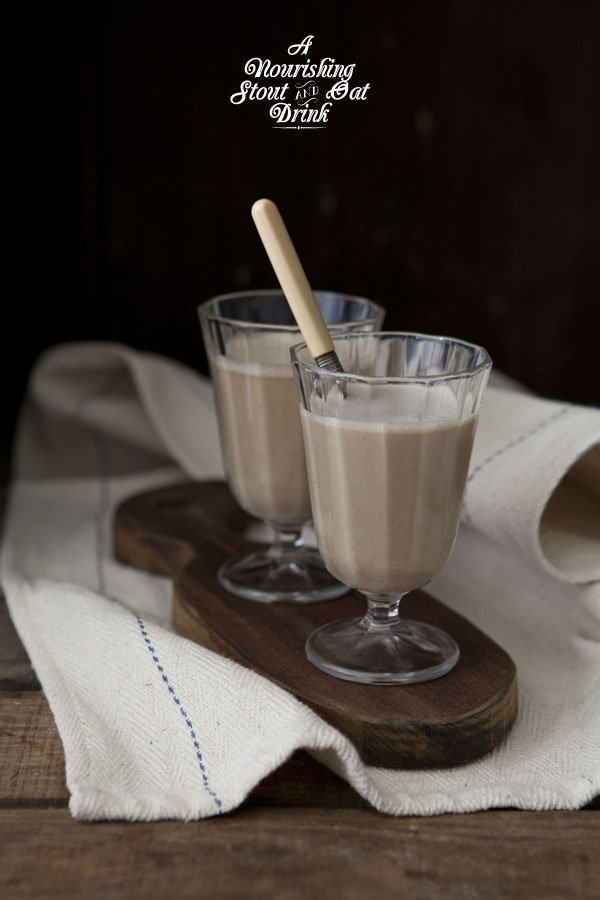
My mother always told me she and my grandmother loved drinking a Trappist beer when they were breastfeeding, she said that it was nurturing for new moms and that in the old days the nurses would actually bring a beer to the mothers to stimulate the lactation process.
But it isn’t just a myth, if a nursing mother drinks a good old pint of beer, the yeast and hops in it will help increase her milk supply. Hops are also calming, so good for the new mom. Brewers yeast is also taken as a supplement to boost the milk supply by mothers who do not enjoy the taste of a lovely beer.
Trappist is a Belgian beer but I think Stout is the prefect beer for this recipe as I’ve heard stories about mothers receiving a Stout when they have given birth, a Nourishing Stout would have been better but sadly those haven’t been brewed commercially for decades. Milk Stout is called that way because it used to contain lactose, a sugar derived from milk. Lactose doesn’t only add sweetness to the beer, it also adds calories which is why together with the yeast and hops in the beer it was given to lactating mothers. Although Milk and Nourishing Stouts only became popular after the First World War, the usage of lactose and the mentioning or illustrating of it on the beer labels was forbidden after the Second World War due to rationing.
The only surviving Milk Stout is Mackeson’s, I came across it by accident when I was at Tesco’s a few months ago, the can still shows a milk churn that has been Mackeson’s trademark since it was first brewed in 1907 at the Mackeson’s brewery in Hythe, Kent. Mackeson’s is now brewed by InBev so I doubt that there is still any lactose in the beer today.
As I am creating this concoction for my friend and fellow blogger Zita who gave birth to a healthy little boy a few hours ago, I am going to make it as nutritious as I
can.
Now luckily I know Zita does like an occasional beer so I’m not
bringing her anything she wouldn’t like to drink. I am including a way to remove the alcohol from the beer in the recipe, so it is ‘safe’ to drink for those who are worried about getting their newborn drunk. This drink isn’t
solely for nursing mothers, it is also for the dad, the friend, the guy
in the street and the health food lover. It is packed with nutrition.
To go with the Stout I’m making my own Oat milk.
Oats have a low glycemic index, which can help to regulate blood sugar
levels and make you feel fuller for longer. They also contain lots of vitamins,
minerals and antioxidants, are a good source of protein and complex carbohydrates.
You can use 3 types of oats for this recipe, the groats which are the oat kernels with the hulls removed, rolled
oats which are steamed groats that have been rolled out and flattened and steel
cut oats which are the oat groats chopped up. Steel cut oats are therefore the
best choice as they contain more of their original nutrients but they are not as easy to find as rolled oats.
To break down the phytic acid content which makes the oats more digestible and reduce anti-nutrients so your body can soak up a lot more of the nutrients, I soaked the oats with cider vinegar. You can also use live yoghurt as lactic acid fermentation.
This drink is for all those who love Stout, if you don’t care for Stout I don’t recommend you try this drink as it is quite bitter. The bitter Stout works perfectly with the sweet oats, and even has notes of a coffee with lots of milk.
Before you skip to my recipe, have a look at our feast for Zita!
Maybe you remember the Virtual baby shower we did last summer, today were are back with a whole new table of food, follow the links to the blogs to read the other ladies recipes:
Our Menu
Giulia: Scarpaccia
Regula: Nourishing Stout & Oat Drink
Beth: Moghrabieh Salad with Preserved Lemon and Coriander Pesto
Jasmine: Whole Wheat Flour Cocoa Cookies
Artemis: Kasopita – Cheese Pie from Εpirus
Sarka: Kiwi Carpaccio with Pecans and Manuka Honey
Emiko: Ricotta and Dark Chocolate Cake
Sneige: Pomegranate Curd with Seedy Pine Nut Crust
Simone: Pistache Raspberry Cakes
Karin: Fresh Pea Souffle with Goat Cheese
Nourishing Stout and oat drink
What do you need
Start the evening before, or in the morning.
To prepare the oats:
- Steel cut or Rolled oats, 1 cup (you can use the groats if you can find them)
- apple cider vinegar (or live yoghurt), 1 teaspoon
- water, 2 cups
For the drink:
- water, 2 cups
- 1 date, stoned (2 if you like it sweeter) and cut finely
- Stout or Guinness, 1 cup
- a fine sieve
- a blender or food processor
Method
- Combine the oats, cider vinegar (or yoghurt) and water in a bowl, cover loosely and leave to soak for at least 8 hours.
8 hours later …
- Drain your oats by straining them through a fine sieve, discard the soaking water
- Rinse the oats gently to remove the starch
- Put the oats and the date into the food processor (I used my Vitamix) and blend
To make this drink with alcohol free stout:
- add one cup of stout to a small saucepan and bring to the boil, simmer for 5 minutes then let it cool. (the drink will taste less bitter with this method)
- Add two cups of water and one cup of stout and blend again until creamy
- At this point you can strain your oat milk through a fine sieve again to remove any of the oats, I choose not to, to keep the drink smooth and a little thicker. Discarding the oats is trowing away nutritious food.
- If you want to strain, you can keep the leftover oats to make cake or pancakes.
Leave the drink to rest for 30 minutes – 1 hour before use
Enjoy!
You might also like
Strawberry and Pimm’s Granita
Drunken cherries
Cobnut Brandy
Sloe Gin
The post Nourishing Stout and Oat Drink appeared first on Miss Foodwise.
]]>The post Wheaten Soda Bread with Stout Beer, Oats and Molasses for St-Patrick’s day appeared first on Miss Foodwise.
]]>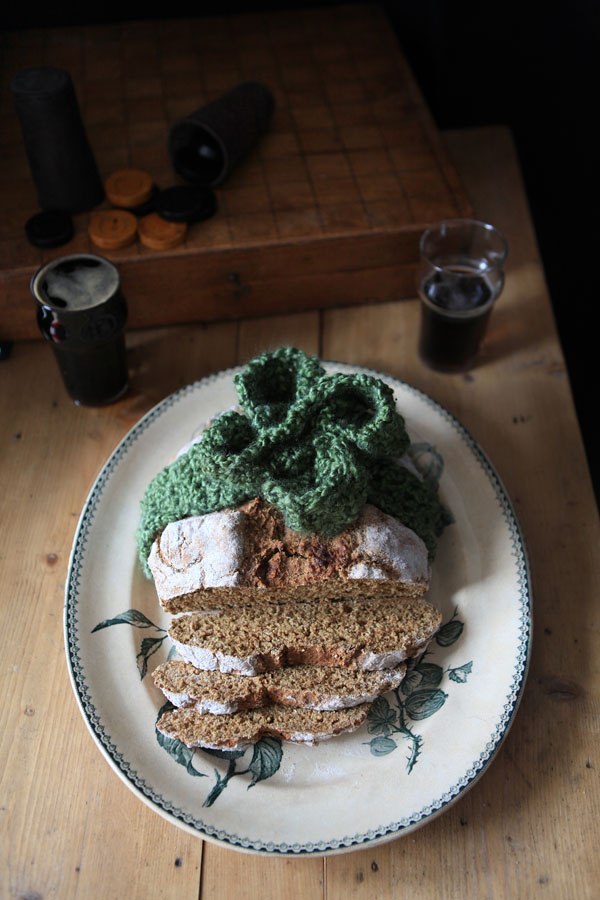
I was asked by Honest Cooking online food magazine to share a St-Patrick’s day recipe with them. I’ve never been in Ireland so therefore St-Patrick’s day is something I only know from visiting the Irish pubs that used to be plenty in Antwerp. The day would be advertised on the pubs blackboards weeks in advance offering live music and a Paddy’s special menu. When the day finally came, the Irish folk living in Antwerp and the Irish sailors who were docked at Antwerp port with their ships would gather at the pubs to enjoy a pint and a meal, you would hear the traditional Irish folk music from behind the corner along with loud and often drunken sing-alongs. In Antwerp you most certainly knew when it was St-Patrick’s day … But as the Irish pubs started to disappear, the St-Patrick’s day celebrations and the taste of Irish food went with them.
Wheaten Stout Beer, Oats and Molasses
What do you need
• 500g/17oz. good quality – organic wholemeal wheat or spelt flour
• 1/2 cup / 4oz.rolled oats
• 2 teaspoons of baking soda
• 1 teaspoon of sea salt
• 3 teaspoons of molasses
• 200ml/6.7 oz stout beer and 200 ml/6.7 oz live yoghurt
• some extra flour to dust
Method
- Preheat your oven to 190C/375F
- Line a baking tray with greaseproof paper
- Combine the flour, baking soda and salt well in a bowl.
- Add yoghurt and stout and mix with the dry ingredients.
- Quickly form a wet dough – it is important to get the bread in the oven as quickly as possible and not to overwork it – if the dough is too wet dust with flour until you can shape it.
- Dust it with flour and cut a cross in the dough half way down the dough.
- Put on the baking tray in the middle of the oven for 40 minutes.
- The bread is ready when it makes a hollow sound when you knock on the bottom.
- Cool on a wire rack
I like to place a small container of water with the bread in the oven, the moisture will help the bread get a tender crumb.
Best eaten when still slightly warm, spread with butter and with a piece of bitter dark chocolate …
 |
| The Irish Times pub in Antwerp, is no longer. There had been an Irish pub on this site since the 40’s |
You might also like
Soda bread – a loaf in 45 minutes
The post Wheaten Soda Bread with Stout Beer, Oats and Molasses for St-Patrick’s day appeared first on Miss Foodwise.
]]>The post Poverty and oysters … Beef, stout and oyster pie appeared first on Miss Foodwise.
]]>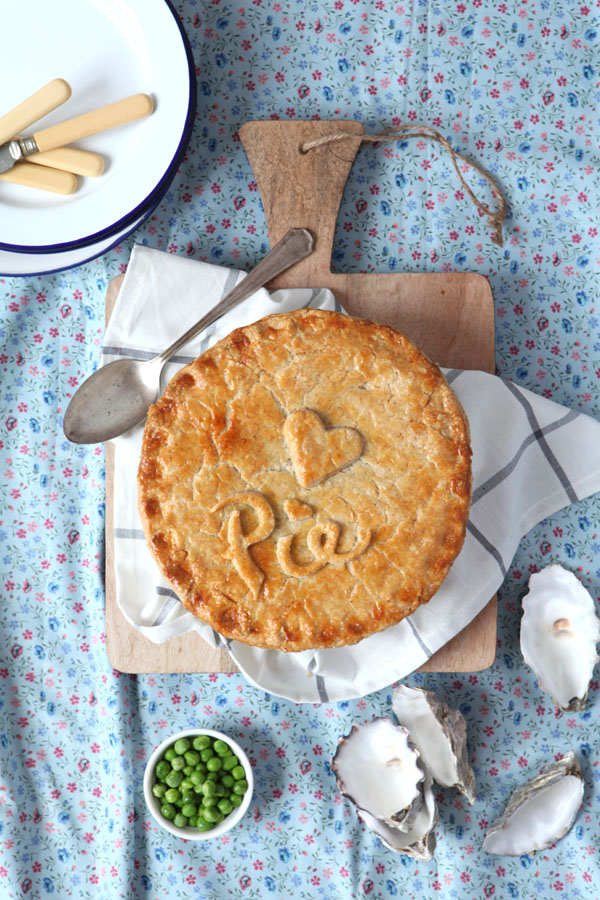 As Dickens’ Sam Weller remarks in the Pickwick papers:
As Dickens’ Sam Weller remarks in the Pickwick papers:
‘Poverty and oysters always seem to go together’.
Oysters have been savoured in Britain since Roman times. Shells have been found at many archaeological sites, with the Roman fort and Amphitheatre in Richborough as the most symbolically important one, and stretching as far north as Hadrian’s and the Antonine walls. Before the Romans came, the Britons regarded shellfish as something to eat when there was no fish or meat to be had. The little molluscs weren’t sought after until the Romans started to farm them and even export them live to Rome, where they were considered a delicacy.
When the Romans withdrew and the Saxons invaded in the 5th century, so a rich culinary culture disappeared, which included the oyster farming. It would take centuries for the oyster to become popular again and the first recorded appearance is to be found in a 14th century cookery manuscript by the Master Chef of King Richard II.
Throughout
the Medieval period the church imposed a number of days where one
should eat fish rather than meat. In fact, for a third of the year,
eating meat was forbidden. Therefore the mixing of fish and meat in
dishes only became popular later in the 16th century and an early 17th
century cookbook gives the recipe for roasting mutton with oysters.
By the end of the 18th century the industry had become highly regulated and although oysters had been the delight of the rich for a very long time, industrialisation cheapened them, making oysters one of the staples of the diet of the poor.
Beef
and oyster pie is a classic Victorian dish; it was the food of the
poor, and the poorer you were the more oysters you would put in your
pie. Oysters were plenty, the smaller ones sold as fast food on the
streets of London or pickled to keep, while the bigger ones were put in
stews and pies to make up for the deficiency of meat. It was a cheap
source of protein.
Oysters were also a typical food to be found
in public houses, where they were most commonly served with a pint of
stout. Stout beers were popular because of their strong flavour, higher
alcohol content, longer shelf life and because they were cheaper than
other beers. The claims of Stout being a nutritious drink made the
pairing with oysters the perfect cheap meal for the working class on
their way home with their wages.
Demand for oysters was high,
with as many as 80 million oysters a year being transported from
Whitstable’s nutrient-rich waters to London’s Billingsgate Market alone.
In the middle of the 19th century the natural oyster beds became
exhausted in England. As the oyster beds further declined, what had
previously been the food of the poor became a delicacy for the upper
classes once again.
This pie is wonderfully succulent; once a poor man’s dinner, it now graces our tables with elegance. The beef, oyster and stout or porter beer are a perfect pairing together with a rich suet crust – just like your nan used to make but let’s kick it up a notch and put some effort into the decoration of the pie! It’s fun to let your children have a go with the leftover pastry; you will have leftover with this recipe. Keep in the freezer until needed, defrost the evening before in your fridge.
This recipe works just as good as a stew, feeding 4 hungry mouths.
What do you need
For the stew
- 1 large carrot, quartered and cut into 2 cm long pieces
- 3 medium onions
- 500 g chuck of beef, diced
- flour to dust the meat
- 1 pint of stout, Guinness or porter beer
- 1 teaspoon of mushroom ketchup (if you don’t have it, leave it out or use 1 teaspoon balsamic vinegar)
- 2 bay leaf
- thyme
- pepper and salt to season
- water
- 6 oysters, cleaned.
For the pastry
- 300g plain white flour
- 100g unsalted butter
- 100g Atora shredded suet
- a generous pinch of salt
- 125 ml icecold water
- 1 egg, beaten
Method
for the stew – filling
- Preheat your oven to 160C
- Add the carrots and onion to a cast iron casserole and color them over a medium fire.
- Dust the meat with the flour and add it to the vegetables.
- Immediately pour in the stout, mushroom vinegar and herbs.
If the meat isn’t completely covered in liquid, add some water or extra stout until it’s just covered. - Bring to the boil without putting on the lid.
- When boiling, put on the lid and place in a lower part of the oven for 3-3,5 hours.
It depends on the animal used, the quality of the meat and how lean it is to know when the meat will be done. Check on it regularly so you don’t end up with dry meat. The meat is done when it is about to fall apart.
for the pastry lid
- Combine the flour, butter, suet and salt in a large mixing bowl and use your fingers to rub the butter into the flour. Keep on doing this until the mixture resembles breadcrumbs.
- Pour in the water and start pressing the liquid into the breadcrumb-like mixture. Be gentle as you must be careful not to overwork the dough.
- When you have created a rough dough, wrap it in cling film and let it rest in the fridge for an hour or more. You can prepare the pastry the day before if you’re feeling organized.
- Preheat your oven to 180C
- Ladle the stew into your shallow pie dish and place the oysters neatly so everyone will find some in his plate.
- Use the beaten egg to eggwash the edges of the piedish.
- Take your pastry out of the fridge and place it on a floured work surface. Now roll out the pastry about 1 cm thick and make sure it’s larger than your pie dish.
- Now carefully pick up the pastry and place it over the pie dish. Trim off the edges of the pastry so you get a nice lid. Now crimp the edges by using your thumb or a fork so the pastry lid is closed tightly.
- Decorate the pie lid if you like and eggwash generously before putting into the oven on one of the lower parts.
- The pie should be nice and golden after 40-45 minutes.Serve with peas and carrots because you got to have peas and carrots with pie …
You might also like
Sussex stewed steak >
Jo’s Hotpot >
Chicken & taragon pie >
The post Poverty and oysters … Beef, stout and oyster pie appeared first on Miss Foodwise.
]]>
